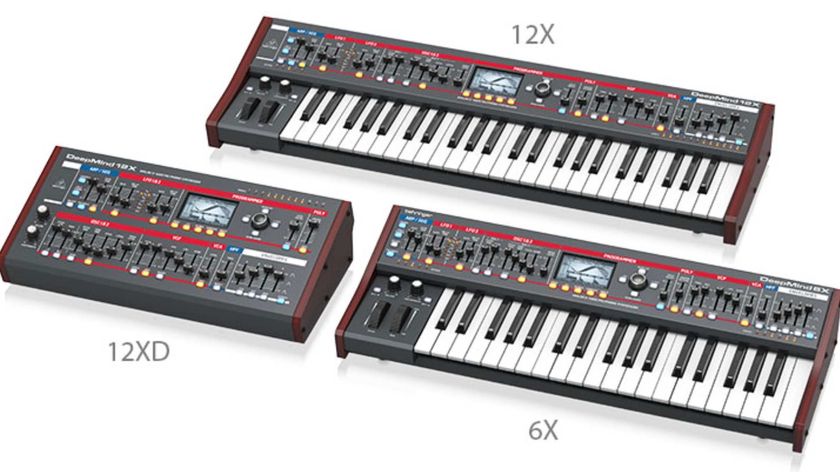“Rarely to never do I ever walk out here and just click two pedals on and go, ‘Yeah, all right! There’s your tone’”: First-call Nashville pro Derek Wells reveals why presets are no good for sessions – and why you should be tweaking too
Wells has scored over 100 country number one hits and he has some solid tone advice for any player who is recording with a band

There is a lot to be said for pedal presets and patches on our multi-effects units – they are super convenient for saving and recalling our favourite guitar tones, and often essential when playing live. But it is a different story when recording, and Nashville-based session ace Derek Wells has explained why players need can’t rely on them in the studio.
In a recent video segment for Inside Blackbird, Wells says all bets are off when you arrive in the studio for a session, because what sounded great before you start recording won’t necessarily work for the track, especially in a busy mix.
“We are trying to get a tone that speaks inside the track, amongst all the other frequencies that are happening in that track,” he says. “It’s easy to hear an AC/DC record and think, ‘Man, those guitars sound huge!’ That’s because there is nothing on it except guitars. It’s guitars and bass and drums.
“Now, you get into a situation where you’ve got acoustic guitar, and electric guitar, and keyboards, multiple keyboard parts. Maybe it’s a situation where you have got a fiddle in the band, and you’ve got pedal steel, maybe there’s two electric players on the session. Your harmonic real estate starts getting slim, and the reality is that, in a track, only a couple of things can really be the meal, sonically, of the track.”
Wells has tracked guitar on an incredible amount of of hits, with over 100 country number ones to his name on a credits list that has seen him work with the likes of Dolly Parton, Kane Brown and Carrie Underwood.
What these sessions has taught him is that the tone has to be fundamentally good, it has to serve the vibe of the song, and above all you have to trust your own ears, and of those around you to find a tone that actually works with the mix. It is easier said than done, and the more effects you have in your signal, the more chance that something might be causing an issue with another frequency.
Sometimes they’ll say, ‘We love the modulation on the delay but the repeats feel a little loud; it’s getting in the way... And you have to get in there and weed through that stuff
“Things like the tone of your reverb, the trail of your delays, those kind of things can interfere with other instruments on the track,” says Wells. “So the reason we are constantly turning knobs in here is because we are using our own ears…
Get the MusicRadar Newsletter
Want all the hottest music and gear news, reviews, deals, features and more, direct to your inbox? Sign up here.
“We are also taking direction from engineers, from producers, from artists, and what they say, ‘Hey, it sounds a little dark in here. Can we brighten it?’ Sometimes they’ll say, ‘We love the modulation on the delay but the repeats feel a little loud; it’s getting in the way of some of the other percussive stuff that’s happening in the track.’ And you have to get in there and weed through that stuff.”
Which means turning the dials and listening for improvements – especially if guitar is not the lead instrument, when it is most important to find a sound that complements the track. There are no shortcuts. It takes as long as it takes, but the easier your pedalboard setup or amp modeller is to adjust, the better.
“Rarely to never do I ever walk out here and just click two pedals on and go, ‘Yeah, all right! There’s your tone,’” says Wells. “It’s a lot of times like a real conversation, and it is a thing that evolves over the takes and over the session to get the spot where your instrument is being heard the best, you’re giving everyone else the runway but you’re saying what you need to say, and that’s the reason why we’re always tweaking this stuff.”
Wells’ insight to life as a session pro, from his go-to guitar amps and rig to how to deal with a session that’s going bad, can be explored in more depth with a subscription to Inside Blackbird. Priced from $14.99/month, it features video tips and wisdom from the legions of pro players and producers who have passed through the storied Nashville recording facility. Check out Inside Blackbird’s YouTube channel for more.
Jonathan Horsley has been writing about guitars and guitar culture since 2005, playing them since 1990, and regularly contributes to MusicRadar, Total Guitar and Guitar World. He uses Jazz III nylon picks, 10s during the week, 9s at the weekend, and shamefully still struggles with rhythm figure one of Van Halen’s Panama.

“Those arpeggios... That was the sickest thing I ever heard”: Yngwie Malmsteen on why guitarists should take inspiration from players of other instruments if they want to develop their own style

“I used a flange on the main riff and a wah-wah on the solo. I just said, ‘Hit the record button and I’ll let it rip!’”: Kiss legend Ace Frehley on his greatest cult classic song












